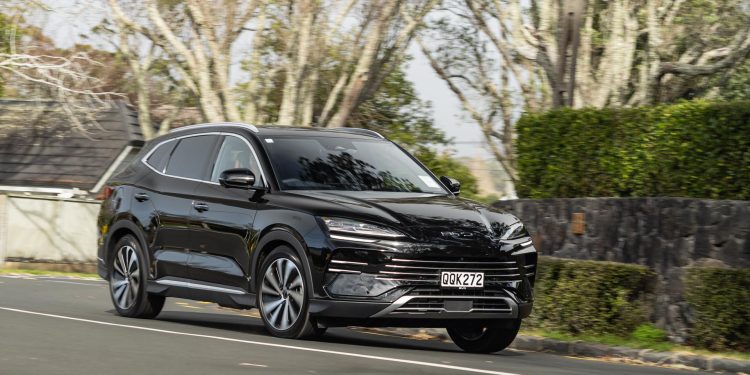2024 BYD Sealion 6 Dynamic review
Words: Peter Louisson | Photos: Isaac Western
With the fizz removed from EV sales by the coalition government, purveyors of passenger vehicles are turning to hybrids as the next big thing.
In case you hadn’t noticed, hybrids are big news in a year that is otherwise bleak for the car industry. That follows a period when EVs were going gangbusters.
But the removal of the clean car discount along with the imposition of RUCs for EVs has seen dramatic changes.
For example, last December BYD sold over 650 EVs as the public stampeded for their last chance at securing a clean car discount.
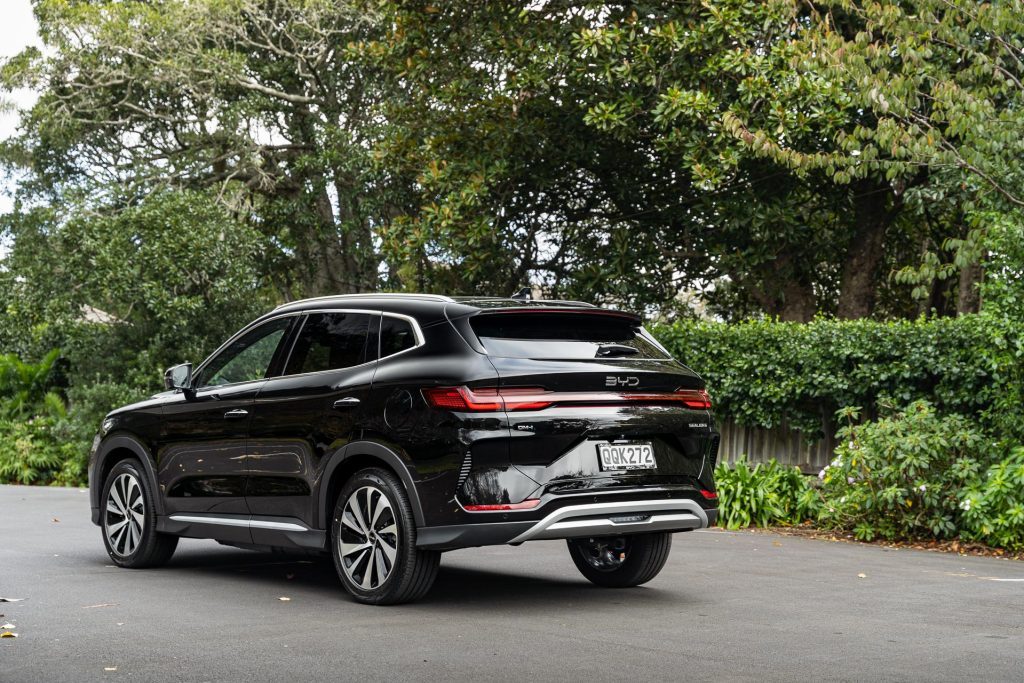
The following month, they sold 40. So from being in vogue, EVs were suddenly passé, in one fell swoop by the new government.
Two actually, when they added road user charges, especially at the same rate as NOx-spewing diesels.
Anyhow, almost overnight hybrids became more desirable, especially mild/self charging hybrids that pay RUCs through petrol tax. The Sealion 6 PHEV could not have happened along at a better time for BYD here.
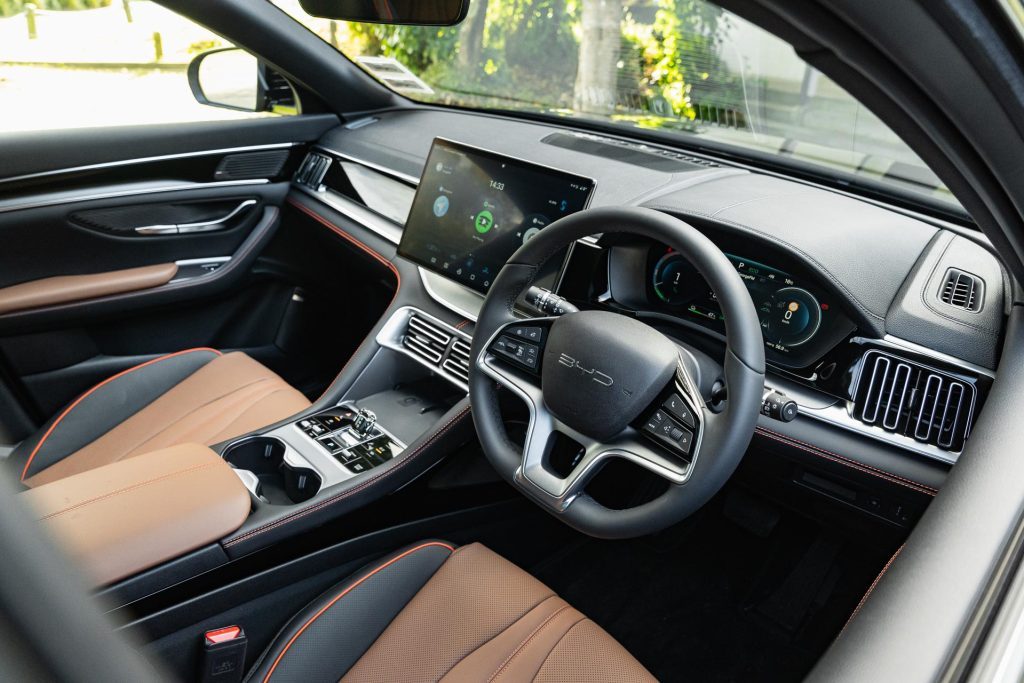
And the incoming BYD Shark ute with a similar powertrain further improves its lot. Although plug-in hybrids still have to pay RUCs, it’s at a more palatable level of $38 per 1000km, versus $76 for BEVs.
This further incentivises PHEV owners to plug-in; you don’t want to be taxed more than you have to.
The Sealion 6 SUV is the first petrol-electric hybrid from BYD. Its DM-i platform for plug-in hybrid vehicles first launched in 2021.
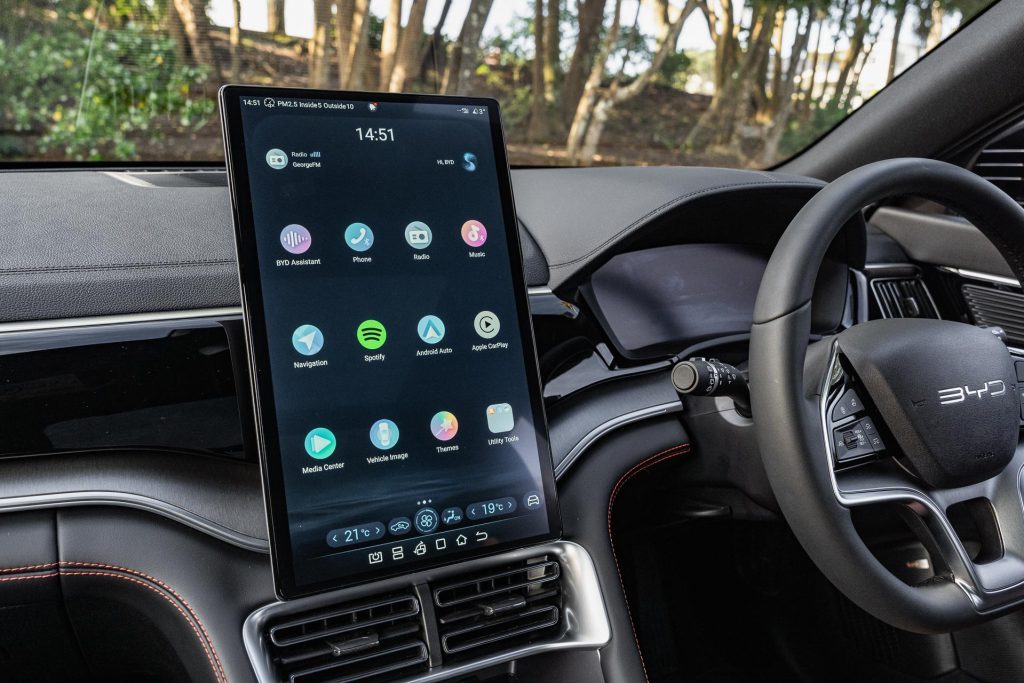
This comprises a high power motor-based system with a petrol engine that works mainly as a generator but also chips in to drive the vehicle when needed.
It features a decent sized (18.3kWh) battery, the charge of which is never allowed to fall below 25 per cent. This gives it an all-electric range of 81-92km.
A recharge, by the by, only takes 2.7 hours using a wallbox or you can hook up to a DC fast charger and it’s done in half an hour. Some other PHEVs don’t allow this.
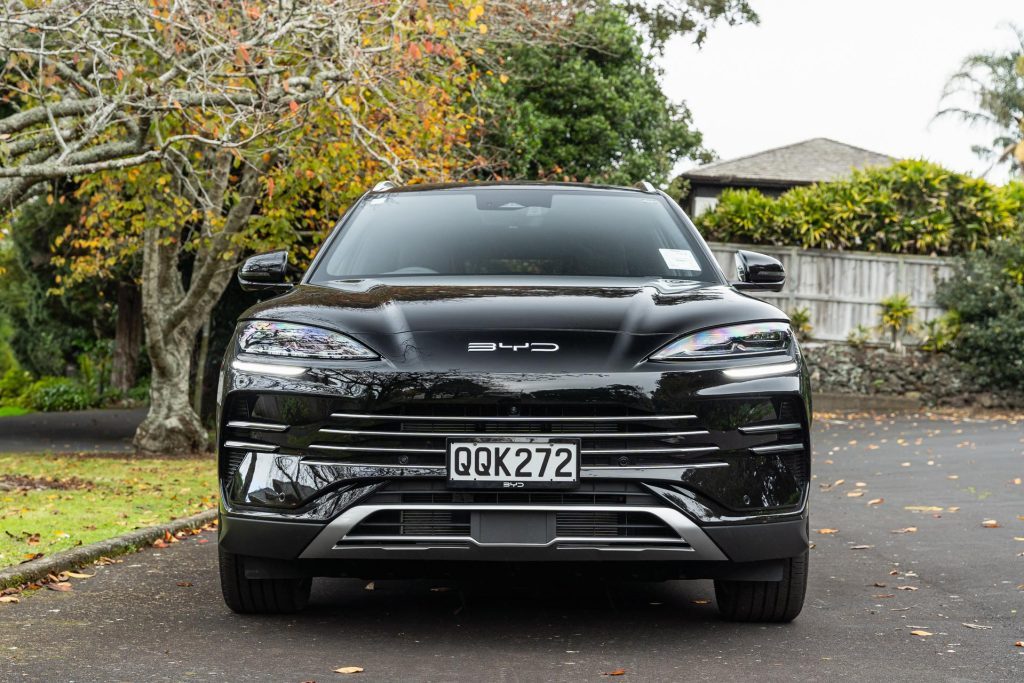
Not just one Sealion 6
There are two versions of the Sealion 6 available here, the base Dynamic model ($57,990) that features a 72kW/122Nm 1.5L naturally aspirated engine and a 145kW/300Nm motor.
Total system power of 160kW and 300Nm gives it a claimed 0-100km/h time of 8.5sec. Fuel use overall is 1.1L/100km (1.2 rightcar), providing you’re regular about recharging.
With state of charge at its lowest, BYD suggests fuel efficiency of 4.8L/100km. We managed around 4.0L/100km during our time with the vehicle which included primarily open road travel at 80-100km/h.
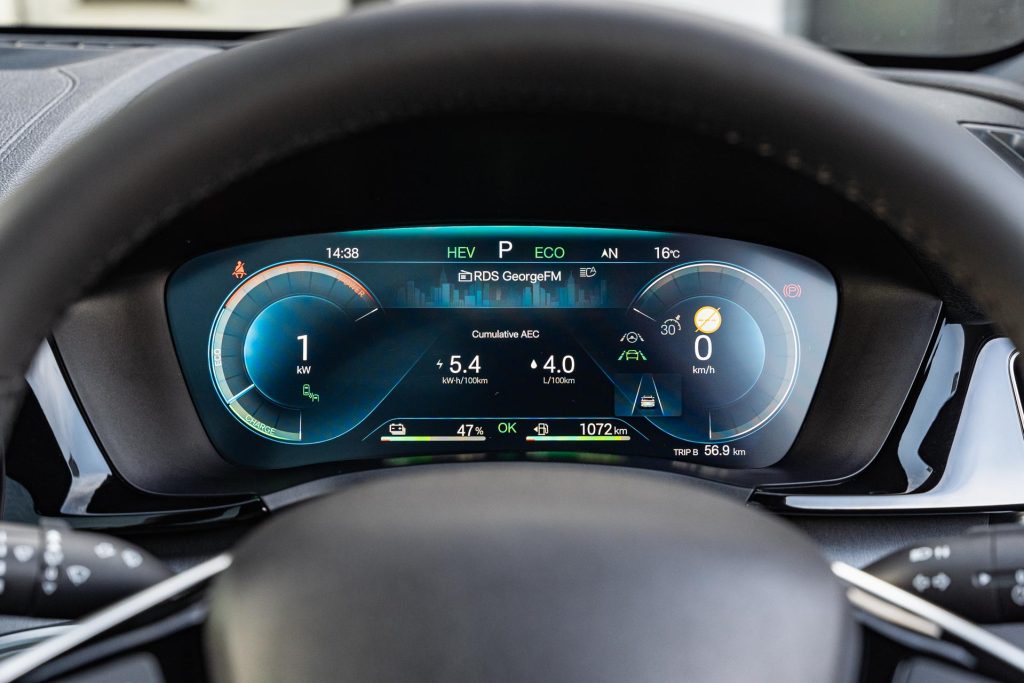
Keeping the battery charged up is the key to fuel savings. And these smaller battery packs aren’t hard to charge. An emergency unit three-pin domestic charger manages a 25 to 100 per cent regen overnight.
The battery is of the Blade variety, lithium-ion phosphate so fire risk is negligible and it has a longer life span (eight-year cover, six years/150,000km for the vehicle).
The other model mentioned is the Premium variant ($64,990), featuring a 96kW/220Nm 1.5L turbocharged engine and a 150kW/300Nm motor up front. There’s also a 120kW/250Nm motor on the rear axle.
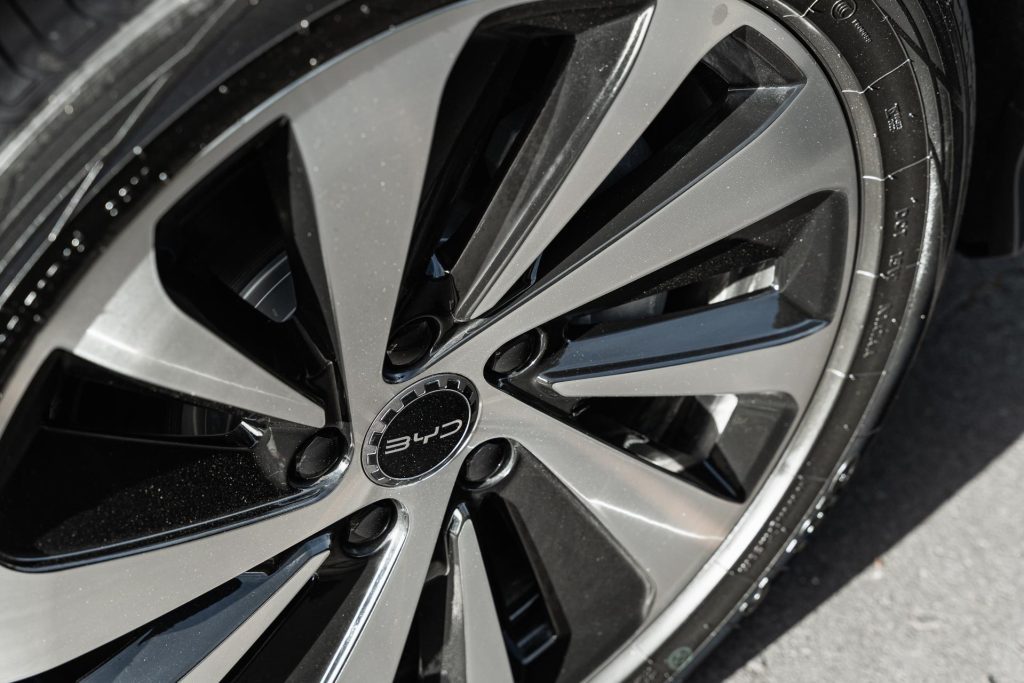
All of which means more weight, scaling up at 2.1 tonnes versus 1940kg for the Dynamic version. However, it is much more potent with total system output of 238kW and 550Nm, scooting it to open road speed in a claimed 5.9 seconds.
Only its optimal fuel use figure isn’t quite as good at 1.5L/100km (rightcar). Its pure electric range is less too (81km vs 92, both NEDC) because of the twin motors.
BYD suggests a fuel use figure of around 5.8L/100km when the battery is at its lowest ebb.
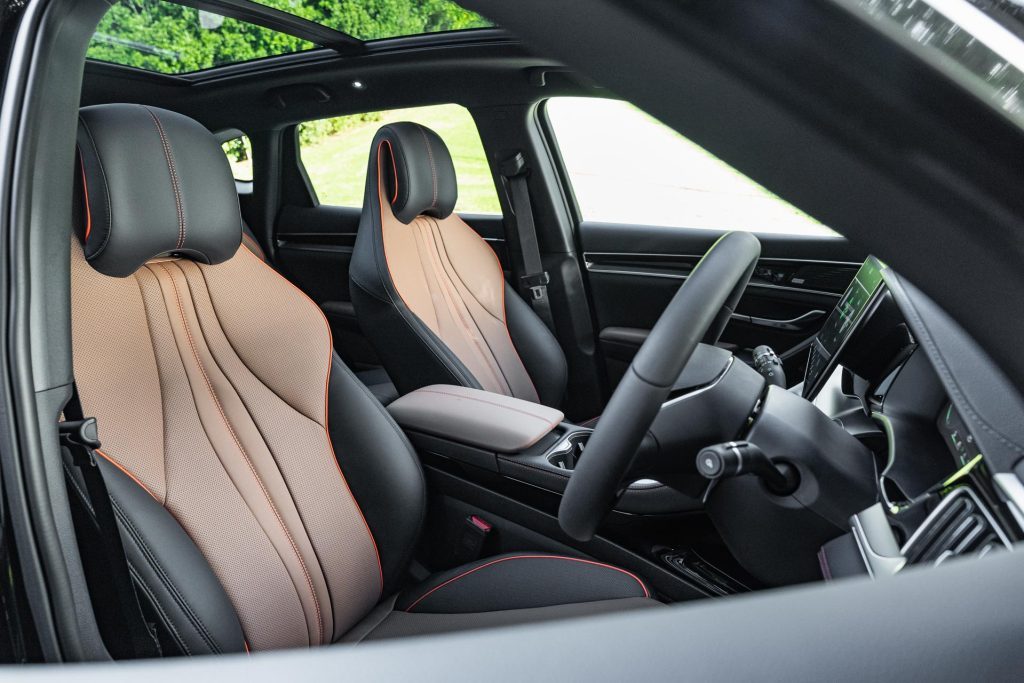
As to the system itself, it primarily defaults to its electric power source, so the engine is there for assistance in parallel hybrid fashion, and for battery charging purposes.
There’s a fair amount of complexity, operating differently under various conditions but that’s neither here nor there because it largely does its own thing.
Recharging regularly is key to enjoying the fuel savings which are surprising.
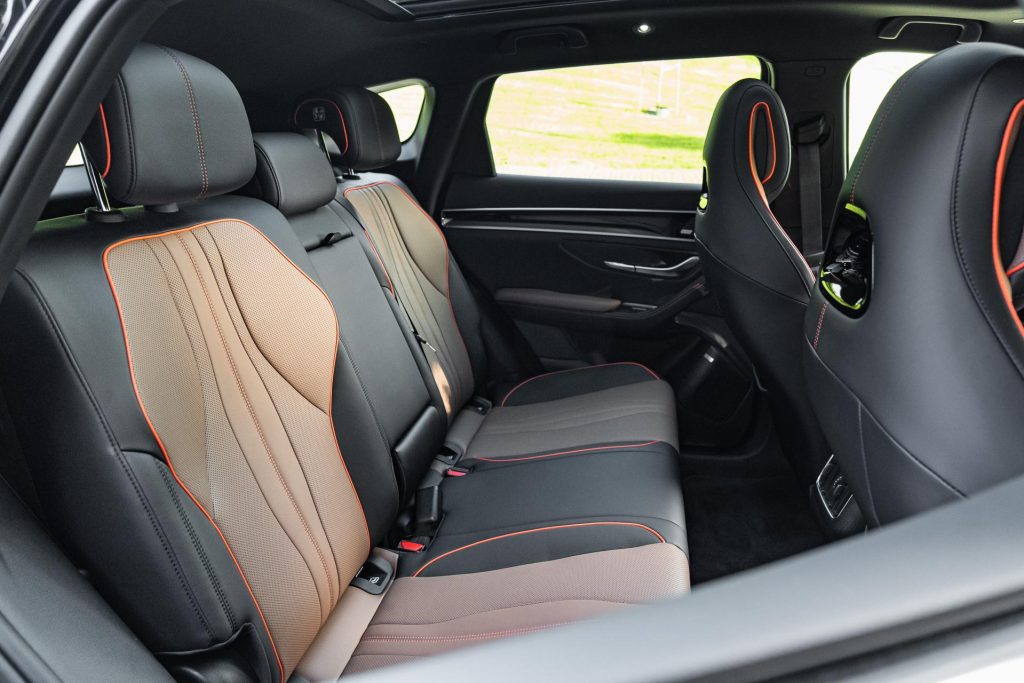
Driving options
In the drive settings you can select EV (best in town) or HEV (country driving). And you can also put a hold on the use of the battery if you’re driving between urban centres.
We set it at 60 per cent but forgot to press ‘save’ so it barrelled right on through that. After activating ‘save’, the system not only put a halt on running the battery down but it also rezipped it back to 60 per cent.
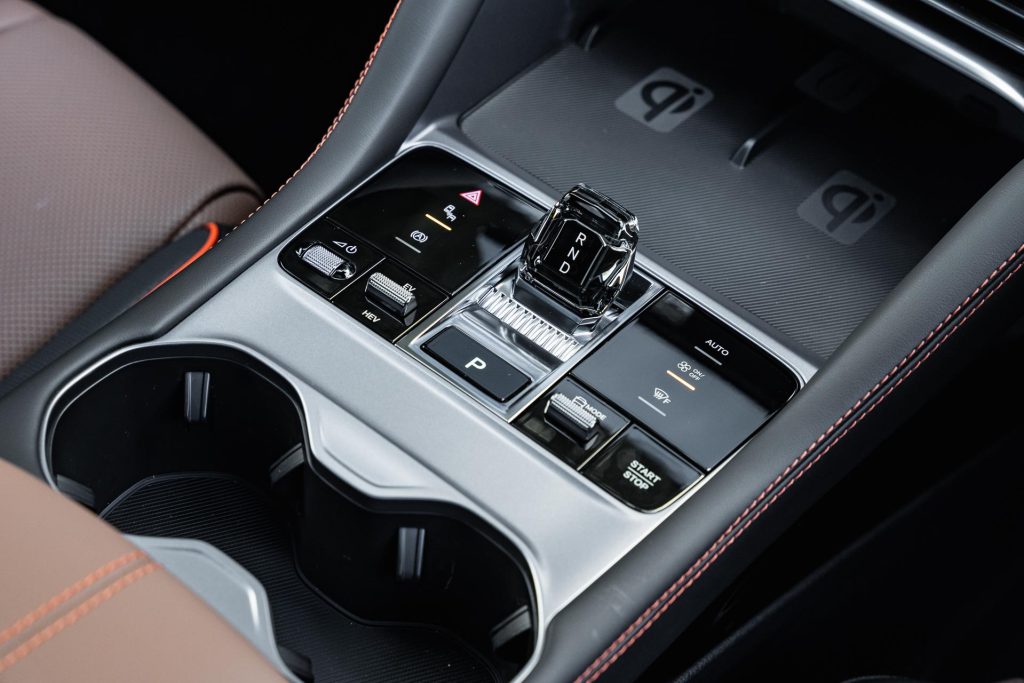
Naturally this uses more fuel but the overall figure during out of town running averaged 4.0L/100km which is pretty decent for a 4.78m vehicle. To give an idea, we drove 276km over the weekend, with mean electrical energy use of 4.7kWh/100km and petrol consumption of 4.1L/100km.
Range at pick up was 1100km, and after the weekend there was still three-quarters of a 60L tank remaining (830km to empty). The claimed combined range for the Premium model is 961km.
Contributing to frugality is regenerative braking that helps to rezip the battery. The regen is variable but only through the touchscreen.
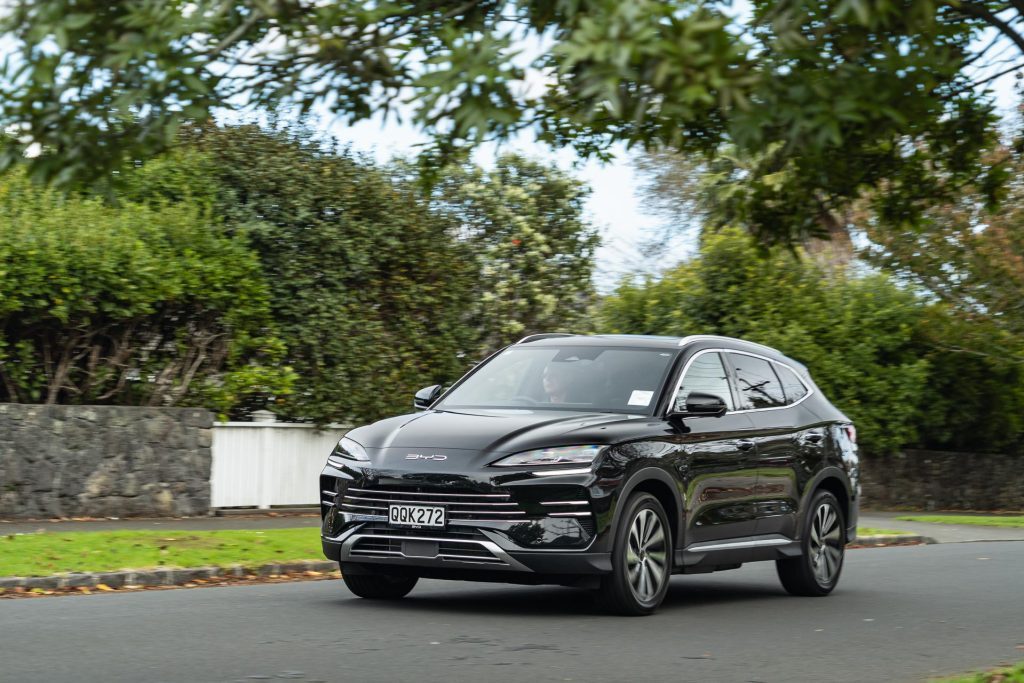
Because it’s hardly single-pedal driving, we left it in high the entire time. That slows you just enough into corners that you seldom have to touch the brake pedal.
Power and thrift well judged
Enough on the system itself; how does it actually go? Well, fine for performance. It almost met its sprint claim, down by 0.1sec at 8.6sec, while an overtake requires around six seconds.
Not quick but fast enough both in and out of town, and just about right for a medium-sized crossover. The bonus of being mainly motor based is haste off the mark and the supreme quietness on the go.
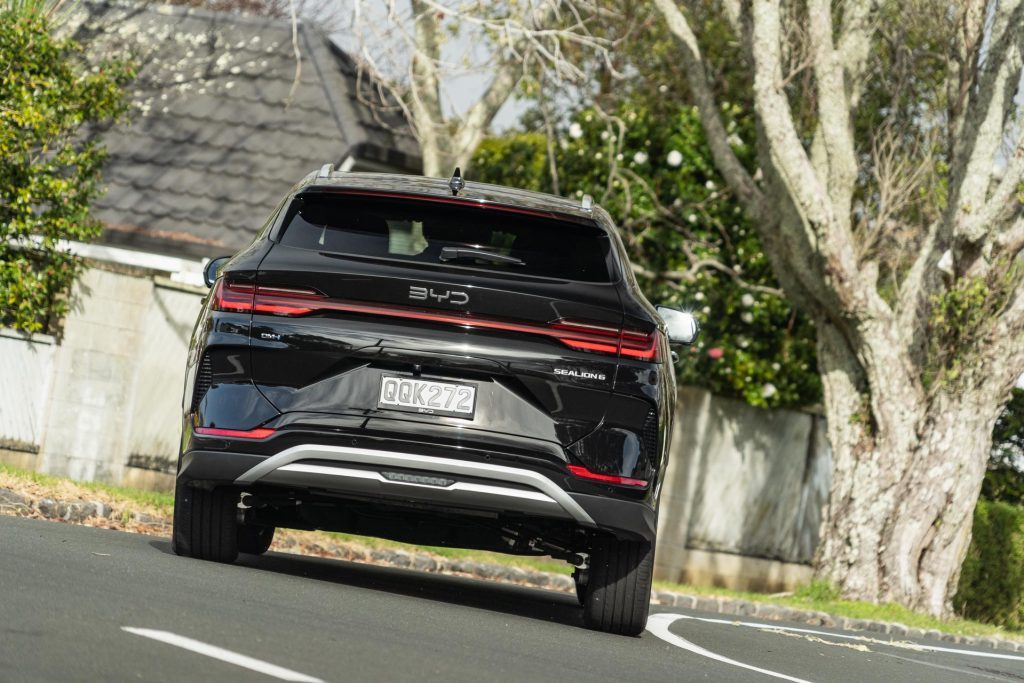
In fact there’s so little in the way of road or driveline rumble that you’re more aware of wind noise. Our highest dB reading wasn’t even in the seventies so it is plenty quiet.
And the engine? You only hear it running during maximum acceleration. It is operating at other times but golly it’s quiet.
There are the usual drive modes, Eco, Normal and Sport. There’s simply no need to opt for Sport because performance in Normal is just fine.
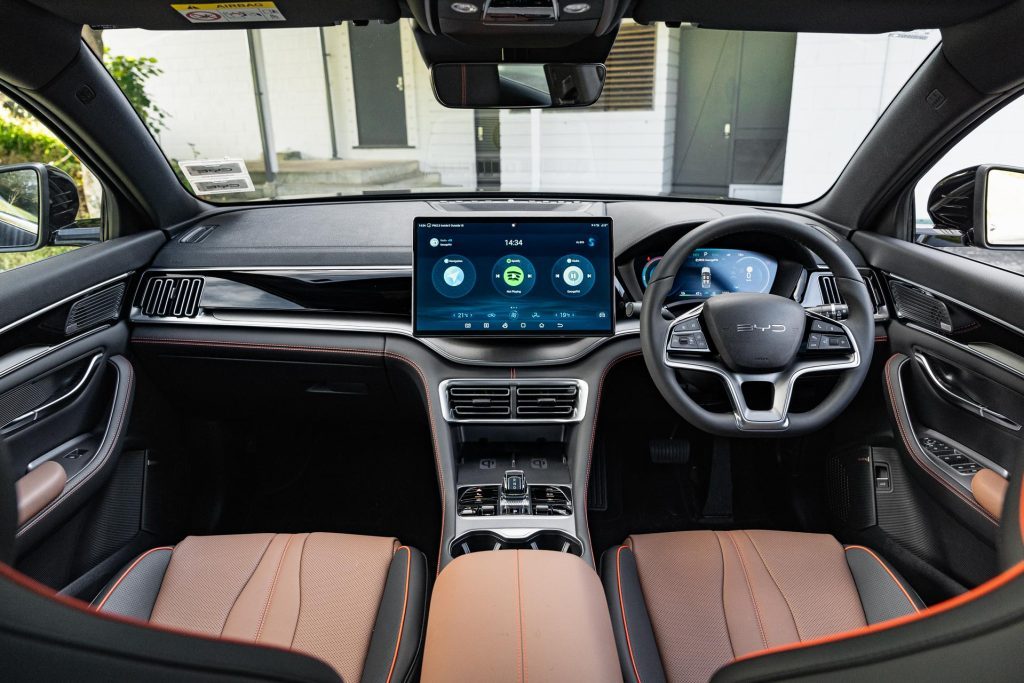
That said, it’s good in Eco mode too. Sport will just chew through more energy with no great gain in performance.
In recent times, as safety becomes a major selling point, some brands have taken warnings to the extreme, with the ‘chime’ factor an annoying byproduct. This isn’t like that; the most annoying aspect is the traffic sign recognition system.
It chimes once when there’s a change in speed limit, and bongs when you’re over speed. Someone had switched it off but I preferred it on.
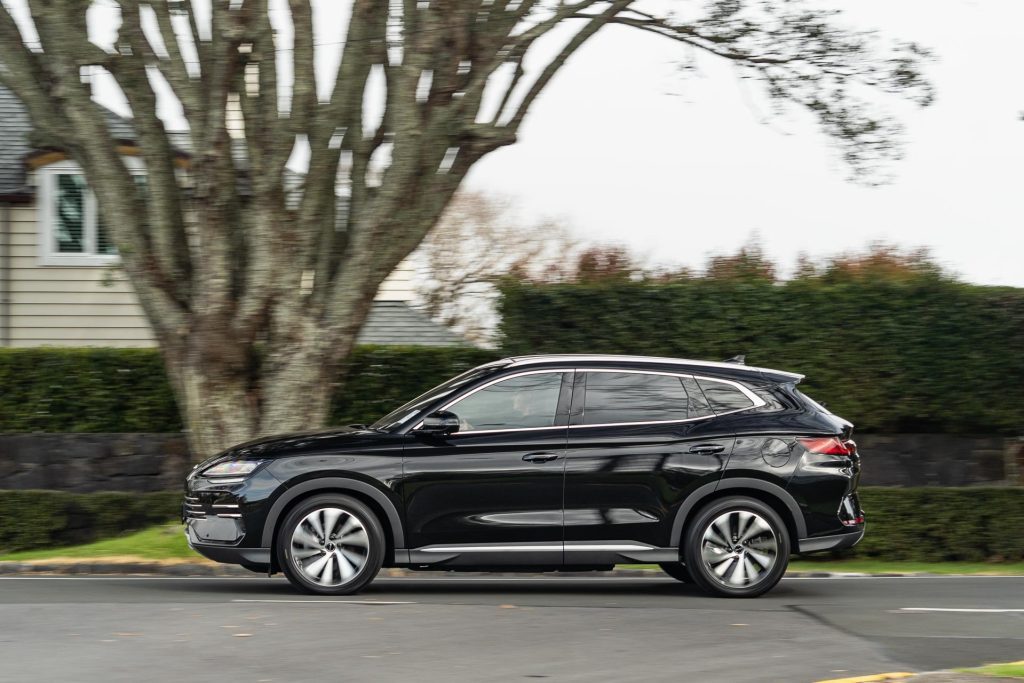
We killed the lane change warning though, easily done via the touchscreen. The overall annoyance factor from this vehicle is low.
Comfort levels are good, as they tend to be in BYDs. Entry is easy, and with the extended door lip you’re not likely to muddy your clothes hopping in or out.
Despite no lumbar adjust the operator’s seat and driving position are good. We like the black/brown leather-like upholstery. Premium gets a blue and grey combo.
BYD spec levels are grand too, no matter whether you opt for the Dynamic or Premium. Both get the same, more or less. Premium adds AWD and the feistier powertrain.
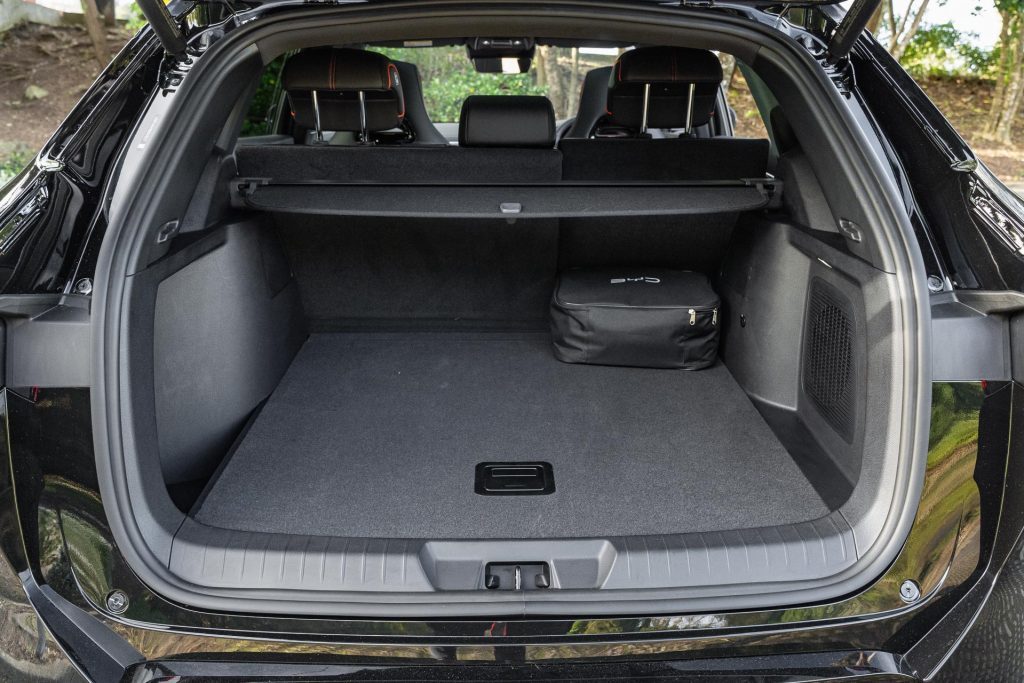
The $7k difference some might not quibble about but we’d imagine many will be just as happy with the rangier Dynamic variant.
The main specification difference is that the Premium model gets a head-up display. Neither comes with a heated wheel but the seats are vented and warmed, and there is literally every safety item you could imagine.
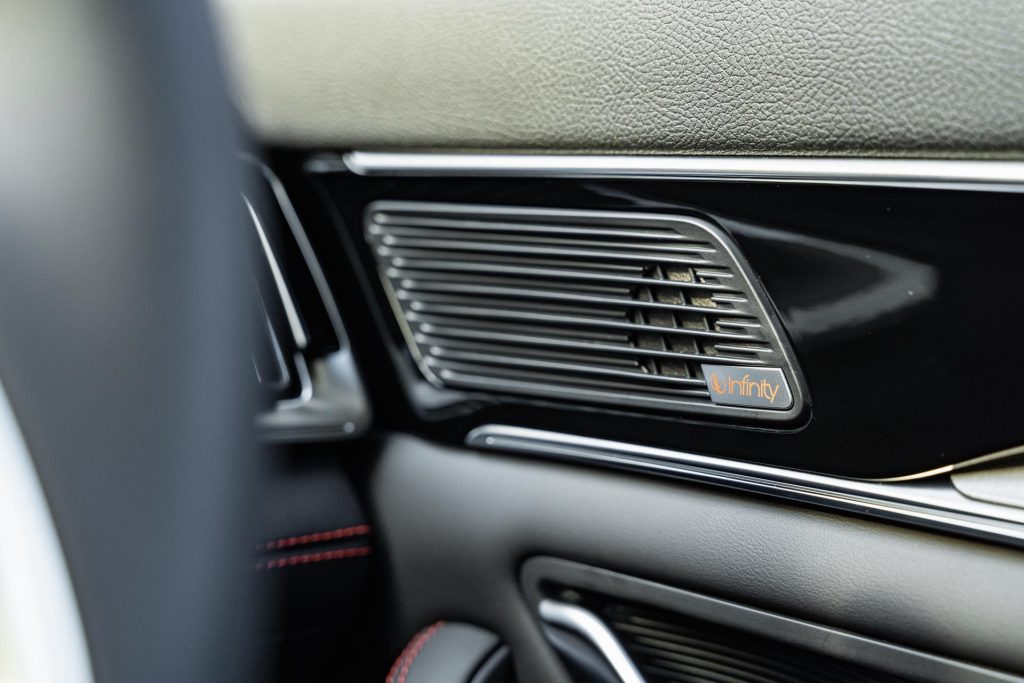
Sealion 6 has yet to be tested by ANCAP but has a five-star rating from its European counterpart.
Special spec features include a pair of phone chargers, keyless entry and start, a panoramic sunroof, privacy and soundproof glass, a powered tailgate, and vehicle to load facility.
There’s room aplenty in the rear too while boot space ranges from 425-1440 litres. We like that the angle of the backrests in the rear is adjustable.
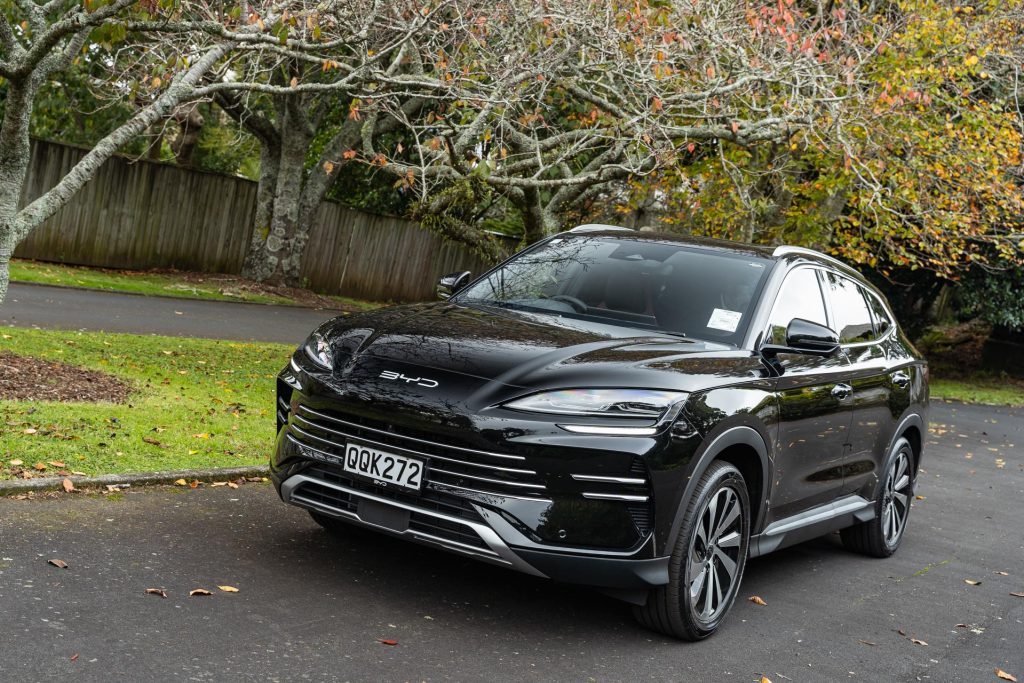
Sealion 6 then should help BYD weather the current EV storm. And next up is its Shark ute with a similar PHEV disposition. Other hybrids are also coming.
| Model | BYD Sealion 6 Dynamic |
| Price | $57,990 |
| Engine | 1500cc, IL4, DI |
| Power | 72kW |
| Torque | 122Nm |
| Motor Output | 145kW / 300Nm |
| Drivetrain | single-speed auto, FWD |
| Range | 92km NEDC |
| Fuel Use | 1.2L/100km |
| C02 Output | 24g/km |
| 0-100km/h | 8.61 sec |
| 100-0km/h | 36.45m |
| Fuel Capacity | 60L |
| Stability systems | ABS, ESP |
| Safety | AEB, ACC, BSM, LDW, RCTA, ALK, AHB |
| Luggage Capacity | 425-1440L |
| Tow rating | 750kg |
| Service intervals | 12 months/20,000km |
| Warranty | 6 years/150,000km |
| ANCAP rating | Not yet rated |
| Weight | 1940kg (claimed) |
This story first appeared in the July 2024 issue of NZ Autocar magazine.


